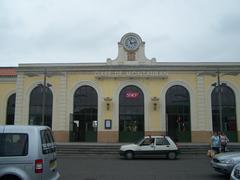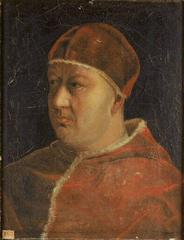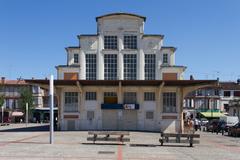Temple des Carmes Montauban: Visiting Hours, Tickets, and Historical Significance
Date: 04/07/2025
Introduction
The Temple des Carmes in Montauban stands as a testament to centuries of religious transformation, architectural heritage, and cultural vitality at the heart of southern France. Established in the late 13th century as a Carmelite monastery, this 17th-century complex has survived waves of religious upheaval—from the Protestant Reformation to the French Revolution. Today, it serves as both an active Protestant temple and a cherished historical site, offering visitors an immersive experience into Montauban’s spiritual and civic past.
This guide provides detailed insights into the Temple des Carmes’ history, architectural features, visiting hours, ticketing, accessibility, travel tips, and nearby attractions. Whether you are a history enthusiast, architecture lover, or cultural traveler, the Temple des Carmes promises a rewarding visit.
For up-to-date information, consult authoritative sources such as Musée Protestant, the official Monumentum listing, and Montauban’s local tourism platforms like eglise.city.
Table of Contents
- Introduction
- Historical Overview
- Architecture and Artistic Heritage
- Modern Use and Community Role
- Visitor Information
- Visitor Experience and Tips
- Frequently Asked Questions (FAQ)
- Summary and Recommendations
- References
Historical Overview
Origins and Early Establishment
The Carmelite order established its presence in Montauban in 1280, receiving authorization to build their monastery outside the city walls (Monumentum). This foundation was part of the broader spread of mendicant orders in medieval southern France, shaping Montauban’s religious and social landscape.
Reformation and Religious Conflict
The 16th century ushered in significant transformation as Protestantism took root in Montauban. By 1561, Protestants were the majority, and the Carmes, like other Catholic orders, were expelled and their monastery destroyed (Musée Protestant). Montauban became a Protestant stronghold, with several temples built, though most were later destroyed by royal edicts.
Restoration and Reconstruction
After the Wars of Religion, the Carmes returned in 1635 and began reconstructing the convent on its original site. The church was completed in 1679, and by 1688 the entire complex was finished (Monumentum). Notably, the planned bell tower was never built, giving the complex a distinctive silhouette.
The French Revolution and Protestant Reclamation
During the Revolution, church properties were confiscated and sold. In 1793, the chapel was officially transferred to the Protestant community, marking a pivotal moment as the building became known as the Temple des Carmes (Musée Protestant). This transition symbolized the restoration of Protestant religious freedom after decades of suppression.
Architecture and Artistic Heritage
Exterior and Interior Features
The Temple des Carmes is a rare, intact example of 17th-century monastic architecture in Montauban, constructed of local pink brick. The complex is organized around a central courtyard with a cloister on all four sides. The church, located to the northeast, features a single nave with a five-sided choir and ribbed vaults—a blend of Gothic and classical influences (Monumentum).
Eight chapels line the nave, each with intersecting ribbed vaults. Interior decoration includes oak paneling, plasterwork from 1685 by the sculptor Dussaud, and a trompe-l’œil painted ceiling. Some stuccos may have involved the father of Jean-Auguste-Dominique Ingres, linking the site to Montauban’s artistic heritage (Musée Protestant).
Cloister and Gardens
The cloister surrounds a medieval-style “jardin de Simples” divided into four areas: medicinal plants, flowers, vegetables, and fruit trees, with a central fountain. The garden reflects the temple’s monastic origins and offers a peaceful retreat (montauban-tourisme.com; navaway.fr).
Modern Use and Community Role
Since 1938, the Temple des Carmes has served as the main place of worship for Montauban’s United Protestant Church of France. The building hosts regular services, community events, and cultural activities and remains a focal point for local Protestants (Musée Protestant). Its central location at 2 Grand-Rue Sapiac makes it easily accessible to visitors.
Visitor Information
Visiting Hours
- Typically open Monday to Saturday, 9:00 AM–6:00 PM; Sundays open for services at 10:30 AM. Hours may vary during holidays or special events. Always check ahead for updates via eglise.city or the parish website.
Tickets and Entry
- Admission is free. Donations are welcome, especially during guided tours or special events. Some concerts or cultural events may require tickets, available via local platforms like agendaculturel.fr.
Accessibility
- The main temple and cloister are on one level, with ramps at entrances. Some areas may have uneven surfaces. Sidewalks around the site can be narrow or obstructed. Visitors with reduced mobility should contact the parish in advance for assistance (eglise.city).
Guided Tours
- Available during special events (e.g., European Heritage Days) and by request. Audio guide apps such as Navaway provide year-round commentary (navaway.fr).
How to Get There
- Located at 2 Grand-Rue Sapiac, Montauban, near the city center. Easily reached on foot from Place Nationale, by local bus, or by car (public parking nearby; note that parking on the street can be limited).
Nearby Attractions
- Combine your visit with nearby highlights: Place Nationale, Musée Ingres Bourdelle, Pont Vieux, and Montauban’s historic core (overyourplace.com).
Visitor Experience and Tips
Atmosphere and Events
- The temple offers a tranquil, contemplative atmosphere, with a welcoming Protestant community. The cloister garden is a highlight, especially in spring and early summer. The temple also hosts concerts, lectures, and cultural events—check local listings and the parish website for schedules.
Photographic Highlights
- The interplay of light and shadow, brickwork textures, and elegant arches offer excellent photo opportunities. Photography is permitted except during services or rehearsals; always ask before photographing people.
Frequently Asked Questions (FAQ)
Q: What are the Temple des Carmes visiting hours?
A: Open Monday to Saturday, 9:00 AM–6:00 PM; Sundays for services at 10:30 AM. Check for special event hours.
Q: Is there an entry fee?
A: Admission is free; donations are appreciated.
Q: Are guided tours available?
A: Yes, during special events and by request; audio guides are available via apps.
Q: Is the temple wheelchair accessible?
A: Yes, with some uneven areas; contact ahead for assistance if needed.
Q: Can I take photos inside?
A: Yes, outside of services and rehearsals, with respect for privacy.
Summary and Recommendations
The Temple des Carmes Montauban is a living monument to faith, resilience, and cultural renewal. Its preserved architecture, tranquil cloister garden, and vibrant community events make it a must-visit destination for anyone exploring Montauban. With free admission, central location, and enriching historical context, it is an ideal starting point for discovering the city’s heritage. For the latest updates on hours, events, and guided tours, always consult official resources.
References
- Musée Protestant
- Monumentum
- OverYourPlace
- myCityHunt
- eglise.city
- temple-protestant-descarmes.epudf.org
- agendaculturel.fr
- navaway.fr
- montauban-tourisme.com


